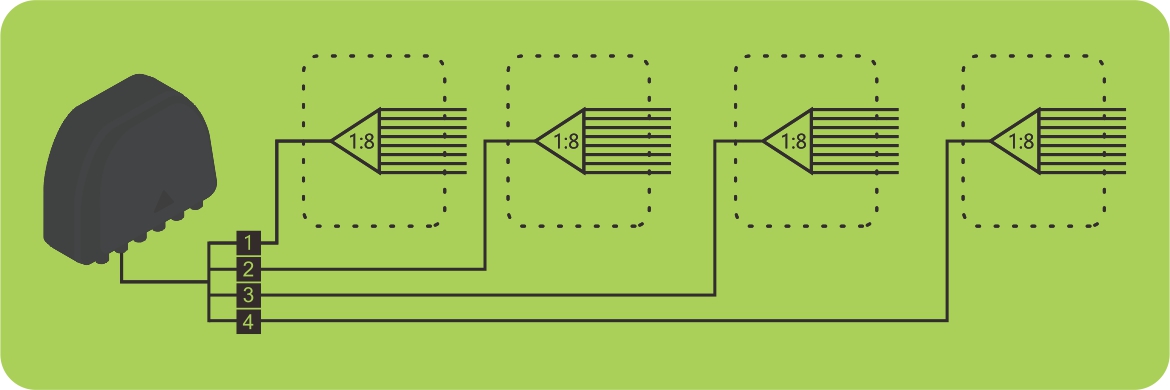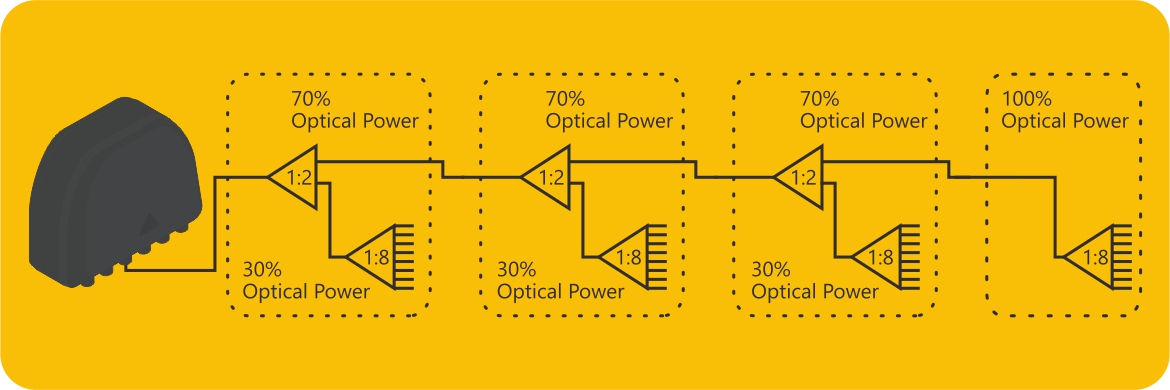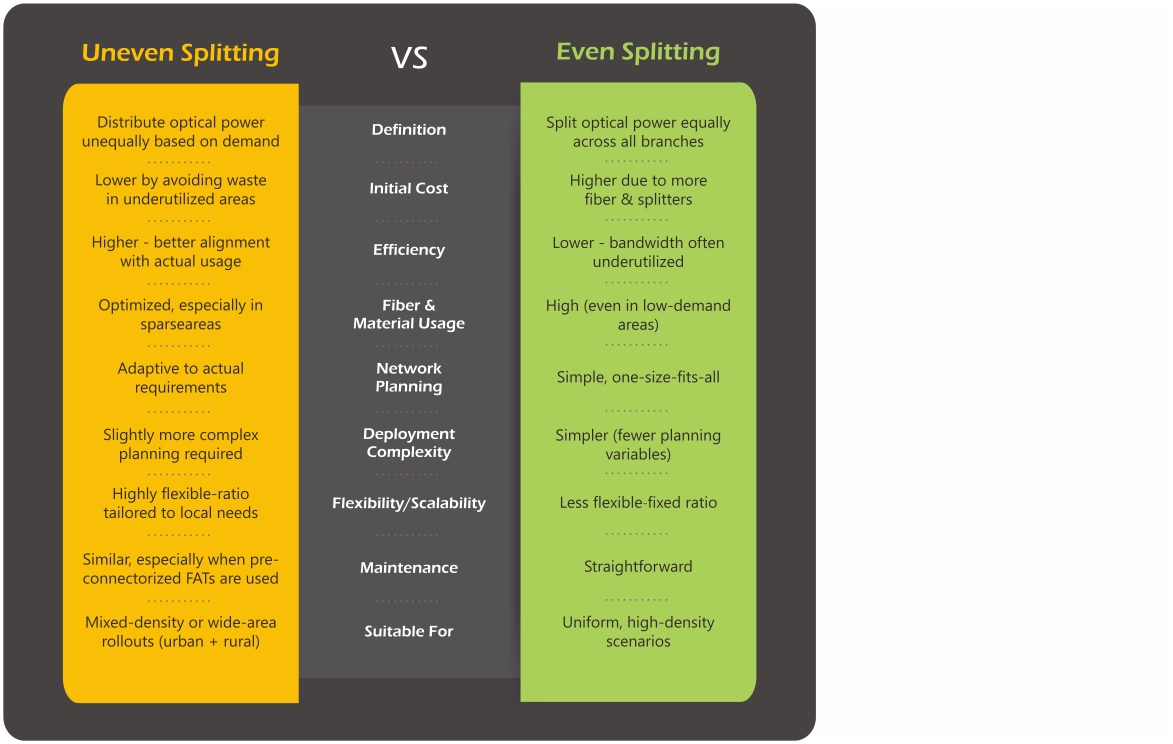Quick Guide to Even & Uneven Splitting + Pre-Connectorized
Introduction
In passive optical networks (PON), splitters distribute light from a single fiber to multiple users. You may be confused about how Even Splitting and Uneven Splitting differ—or which one to choose for your network. This guide will walk you through the following parts:
-
How each scheme works
-
Their key differences
-
When to use each
-
How pre-connectorized boxes speed up both schemes
Even Splitting
An Even Splitting splitter divides the optical power equally among all output ports.
- Example: A 1×4 even splitter gives each of its four outputs 25% of the input power.
Key Points
-
Insertion Loss: Theoretical loss ≈ 6 dB per port; real devices add up to ~7 dB due to excess loss.
-
Topology: Star layout—each output needs its own fiber back to the cabinet or central office.
-
Fiber Use: Many fiber cores reserved, increasing material and labor costs.

Uneven Splitting
An Uneven Splitting splitter sends more power onward (cascade) and less power to local users.
-
Example: A 1×2 uneven splitter might allocate 70% of power to its cascade port and share the remaining 30% among four local ports.
Key Points
-
Insertion Loss: Cascade port (70%) ≈ 2 dB loss; each local port (30%) ≈ 6 dB loss.
-
Cascade Chains: You can chain several uneven splitters in series. A 4-level cascade (three 1×5 uneven, then one 1×4 even) serves 16 users with only one fiber core between boxes.
-
Fiber Use: Single fiber core runs between each splitter, cutting fiber and installation cost.

Side-by-Side Comparison

When to Use Even Splitting
-
Dense urban areas: short distances, small user clusters.
-
Simple star layouts: each splitter serves only a few homes.
-
Uniform power needs: all users require the same signal strength.
When to Use Uneven Splitting
-
Long, Branched Routes
-
Chain splitters along streets or aerial cables.
-
Save on fiber and labor by using one core between boxes.
-
-
Rural Villages
-
Serve scattered clusters of homes with minimal fiber runs.
-
-
Large Homes or Buildings
-
Villas, duplexes, or floors with > 4 rooms.
-
A multi-level cascade supports up to 16 drops on one core.
-
-
High-Rise or Campus Networks
-
Cascade on each floor or building block to reduce backhaul fibers.
-
Accelerate with Pre-Connectorized Boxes
To save on fusion splicing time and reduce on-site errors, use LongXing's Pre-Connectorized Optical Distribution Box (ODN-GP31-2P18PC). This box comes ready with your choice of Even or Uneven splitter modules and factory-terminated pigtails.
How It Works
-
Plug & Play: Factory-mounted splitters mean no field fusion is needed.
-
Tested Quality:
-
Each pigtail and splitter port is pre-tested, ensuring low insertion loss.
-
Weatherproof enclosures for rugged outdoor use, supporting both pole & wall mounting.
-
-
Flexible Configurations based on your needs:
-
Even Splitting: Preload equal-ratio modules for star layouts—just plug in drop cables.
-
Uneven Splitting: Load cascade-friendly modules (e.g., 70/30 or 50/50) and daisy-chain to the next box.
-
Benefits
-
Faster Deployment: Cuts installation time by up to 60%.
-
Lower Labor Cost: Eliminates most fusion splicing and reduces technician skill requirements.
-
Reduced Errors: Factory termination and testing minimize field mistakes.
-
Scalable Capacity: Supports up to 18 drop ports and multiple splitter sizes in one IP68-rated enclosure.
Conclusion
-
Choose Even Splitting (with or without pre-connectorized boxes) for star-shaped, short-distance networks where fiber cost is less critical.
-
Choose Uneven Splitting and a pre-connectorized cascade box for chain-shaped, long-distance, or high-branch networks where saving fibers and preserving signal power is essential.
By combining Even or Uneven Splitting with LongXing’s pre-connectorized ODN-GP31-2P18PC, planners achieve cost-effective, efficient, and error-free FTTX deployments.
To learn more about our plug-and-play pre-connectorized solution, read our detailed guide here:
https://www.lxtelecom.com/blog/longxings-pre-connectorized-optical-distribution-box-solution.html


